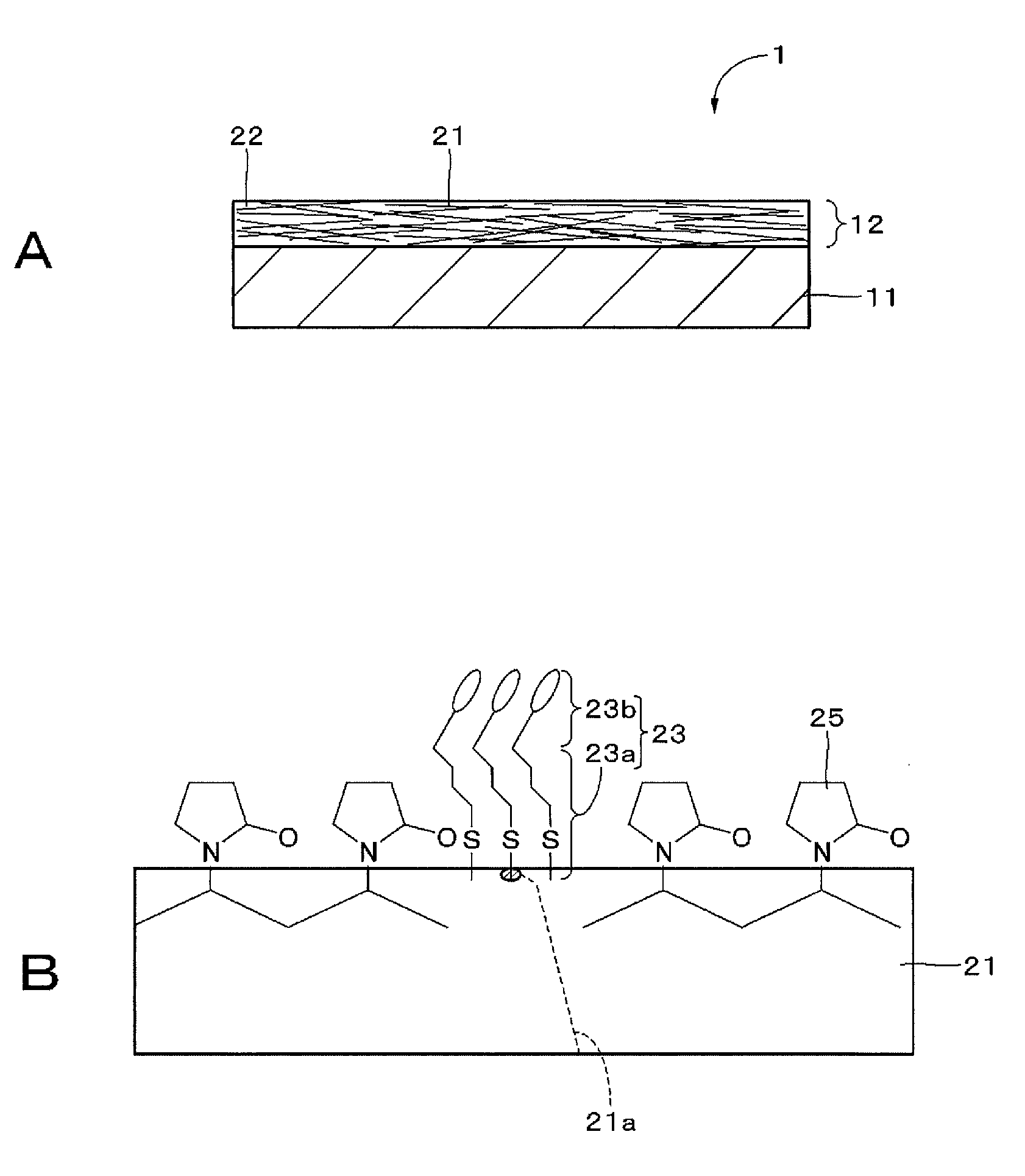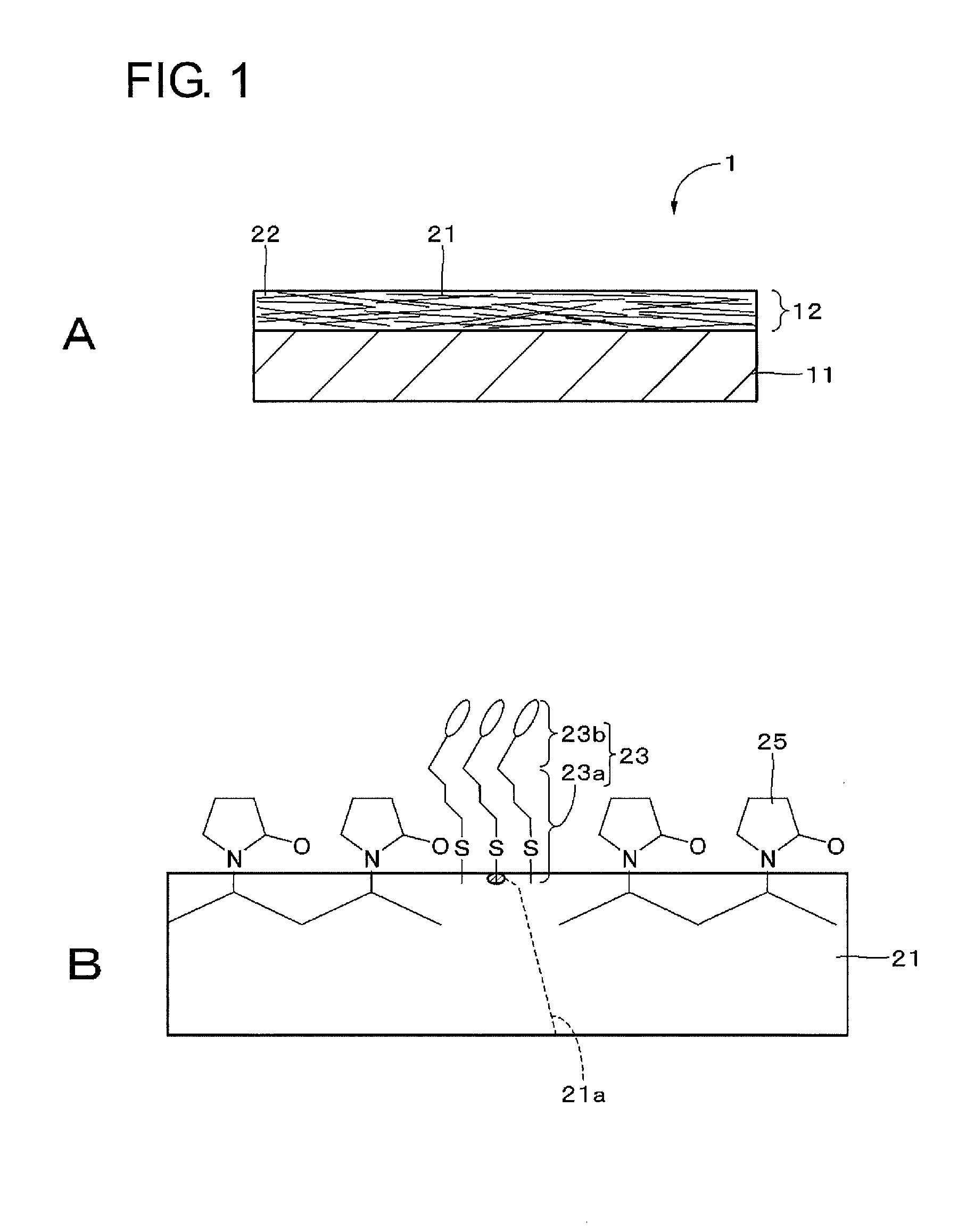Transparent conductive film, conductive element, composition, colored self-assembled material, input device, display device, and electronic instrument
Inactive Publication Date: 2015-02-05
DEXERIALS CORP
View PDF6 Cites 11 Cited by
- Summary
- Abstract
- Description
- Claims
- Application Information
AI Technical Summary
Benefits of technology
The patent describes a technique that prevents light from reflecting too widely on the surface of a metal filler while maintaining the conductivity of the material.
Problems solved by technology
However, transparent conductive films using a metal oxide have been expensive to produce because of sputter deposition under vacuum environment and easy to cause cracking and separation by deformation such as bending and deflection.
However, when a transparent conductive film including a metal filler is provided on the display screen side of a display panel, diffuse reflection of outside light occurs on the surface of the metal filler, so that black display of the display panel slightly becomes bright, which is called a milky appearance (whitish appearance).
Method used
the structure of the environmentally friendly knitted fabric provided by the present invention; figure 2 Flow chart of the yarn wrapping machine for environmentally friendly knitted fabrics and storage devices; image 3 Is the parameter map of the yarn covering machine
View moreImage
Smart Image Click on the blue labels to locate them in the text.
Smart ImageViewing Examples
Examples
Experimental program
Comparison scheme
Effect test
embodiments
[0073]Embodiments of the present technique will be described in the following order with reference to the drawings:
first embodiment (
1. First embodiment (Example of configuration of transparent conductive element);
second embodiment (
2. Second embodiment (Example of configuration of transparent conductive element having patterned transparent conductive film);
the structure of the environmentally friendly knitted fabric provided by the present invention; figure 2 Flow chart of the yarn wrapping machine for environmentally friendly knitted fabrics and storage devices; image 3 Is the parameter map of the yarn covering machine
Login to View More PUM
| Property | Measurement | Unit |
|---|---|---|
| Electrical conductor | aaaaa | aaaaa |
| Transparency | aaaaa | aaaaa |
Login to View More
Abstract
A transparent conductive film includes a metal filler and a colored self-assembled material adsorbed to the surface of the metal filler. This transparent conductive film can prevent diffuse reflection of light on the surface of the metal filler.
Description
TECHNICAL FIELD[0001]The present technique relates to a transparent conductive film, a conductive element, a composition, a colored self-assembled material, an input device, a display device, and an electronic instrument, and more particularly to a transparent conductive film including a metal filler.BACKGROUND ART[0002]Metal oxides such as indium tin oxide (ITO) have been used in transparent conductive films, which require optical transparency, such as transparent conductive films provided on the display screen of a display panel, particularly transparent conductive films of information input devices disposed on the display screen side of a display panel. However, transparent conductive films using a metal oxide have been expensive to produce because of sputter deposition under vacuum environment and easy to cause cracking and separation by deformation such as bending and deflection.[0003]Therefore, transparent conductive films including a metal filler have been studied which can s...
Claims
the structure of the environmentally friendly knitted fabric provided by the present invention; figure 2 Flow chart of the yarn wrapping machine for environmentally friendly knitted fabrics and storage devices; image 3 Is the parameter map of the yarn covering machine
Login to View More Application Information
Patent Timeline
 Login to View More
Login to View More IPC IPC(8): G02B1/04G02B5/23G06F1/16
CPCG02B1/04G02B5/23G06F1/1637G06F3/041H01B1/22B32B27/08B32B27/20B32B2264/105B32B2307/202B32B2307/402B32B2307/412B32B2457/20Y10T428/256H10K50/81H10K50/828G06F3/00H01B5/14G06F2203/04103B32B7/025
Inventor KANEKO, NAOTOMIZUNO, MIKIHISALEE, SUNG-KILIWATA, RYOSUKEISHII, YASUHISA
Owner DEXERIALS CORP
Features
- R&D
- Intellectual Property
- Life Sciences
- Materials
- Tech Scout
Why Patsnap Eureka
- Unparalleled Data Quality
- Higher Quality Content
- 60% Fewer Hallucinations
Social media
Patsnap Eureka Blog
Learn More Browse by: Latest US Patents, China's latest patents, Technical Efficacy Thesaurus, Application Domain, Technology Topic, Popular Technical Reports.
© 2025 PatSnap. All rights reserved.Legal|Privacy policy|Modern Slavery Act Transparency Statement|Sitemap|About US| Contact US: help@patsnap.com



